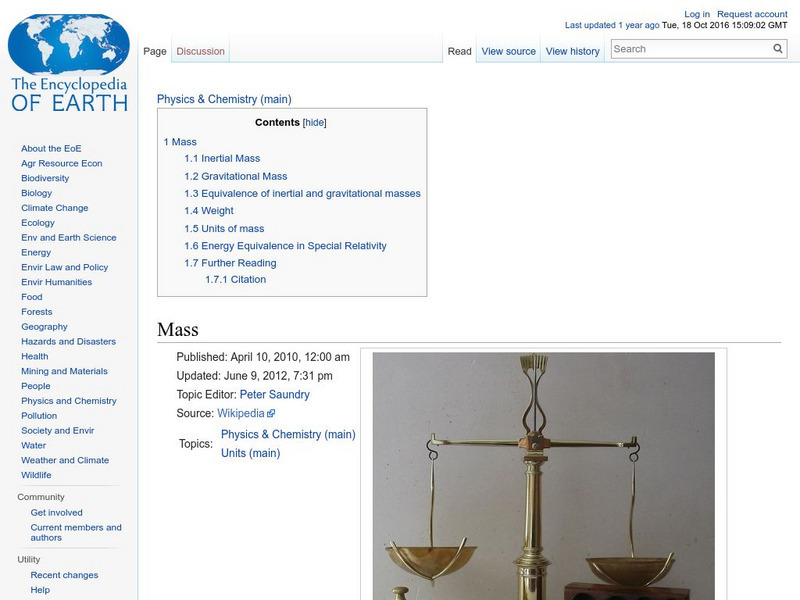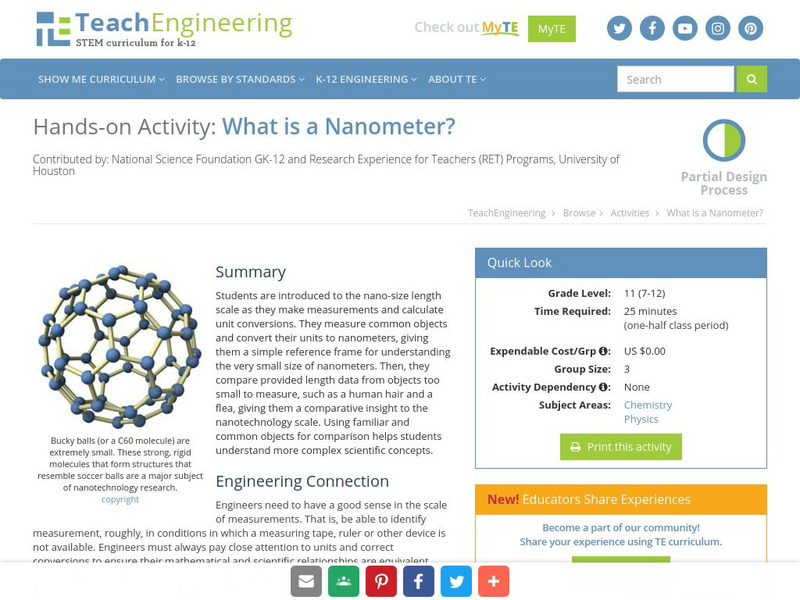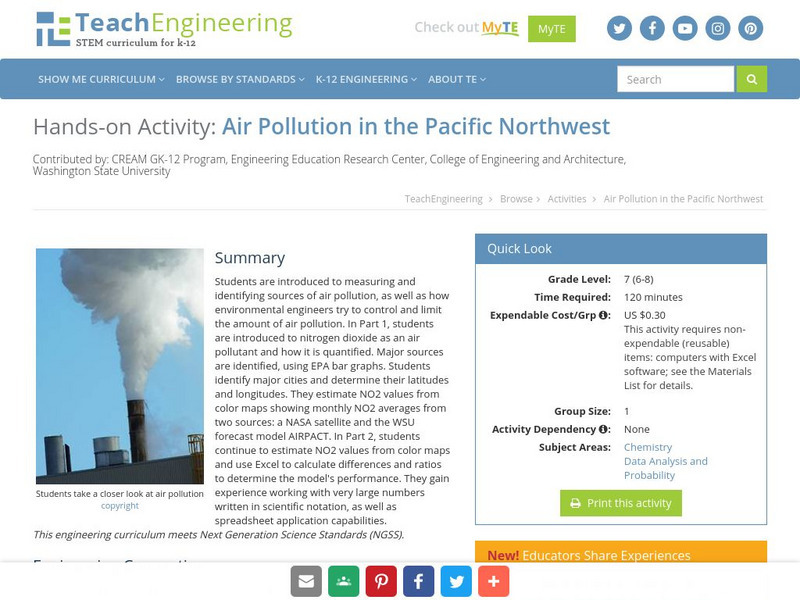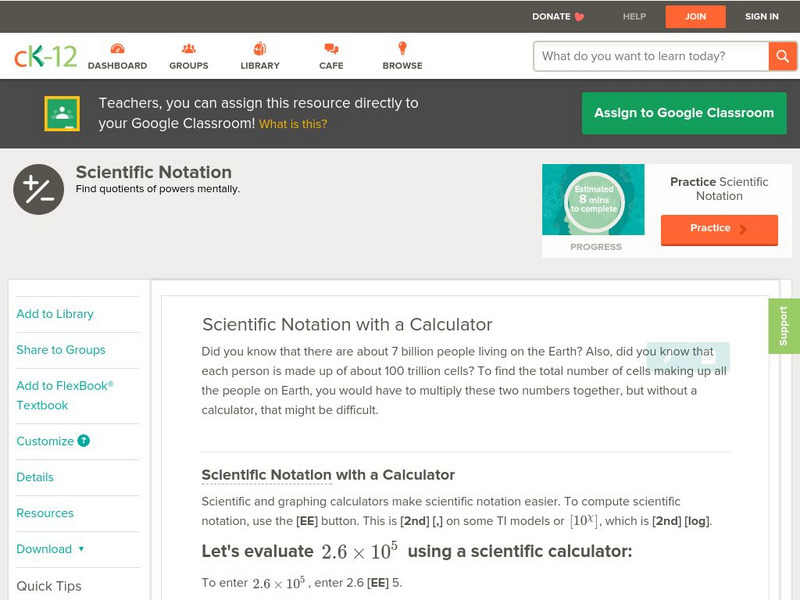Hi, what do you want to do?
Other
Lifewire: Excel Tan Function: How to Find the Tangent Angle
This article shows you how to find the tangent angle using Excel. You may be able to accomplish this on a scientific calculator, but if you don't have one handy, Excel can help you make these calculations better than anything else.
Other
Scientific Visualization: Vector Calculation
A Java applet on vector addition. Users drag two or more vectors to be added together. Clicking a button shows the resultant of the vectors.
TeachEngineering
Teach Engineering: Students as Scientists
This curricular unit contains two lessons that let students actually do the work of scientists as they design their own experiments to answer questions they generate. In the first lesson and its associated activity, students conduct a...
Encyclopedia of Earth
Encyclopedia of Earth: Physics & Chemistry: Mass
Defines inertial and gravitational mass, their scientific history, formulas used in their calculation, the definition of weight, units used for mass, and mass as perceived in the theory of special relativity.
TeachEngineering
Teach Engineering: What Is a Nanometer?
Students are introduced to the nano-size length scale as they make measurements and calculate unit conversions. They measure common objects and convert their units to nanometers, giving them a simple reference frame for understanding the...
TeachEngineering
Teach Engineering: Air Pollution in the Pacific Northwest
Students are introduced to measuring and identifying sources of air pollution, as well as how environmental engineers try to control and limit the amount of air pollution. In Part 1, students are introduced to nitrogen dioxide as an air...
Harvard University
Harvard Smithsonian: Everyday Classroom Tools
The focus of this series of lessons is to engage students in an exploration of the world around them. The emphasis is on inquiry as students learn about the earth, sun, light, shapes and more.
Center for Innovation in Engineering and Science Education, Stevens Institute of Technology
Ciese Collaborative Projects: International Boiling Point Project
An Internet project designed to determine the greatest influence on the boiling point. After reading the project instructions and performing the experiment, submit your data and compare your results to other classes from around the world.
CK-12 Foundation
Ck 12: Algebra: Sentences as Single Variable Equations
[Free Registration/Login may be required to access all resource tools.] Use single-variable equations to describe and solve real-world dilemmas













